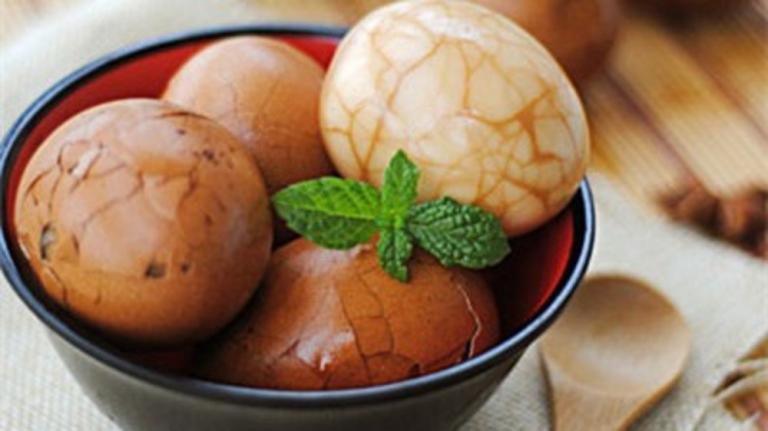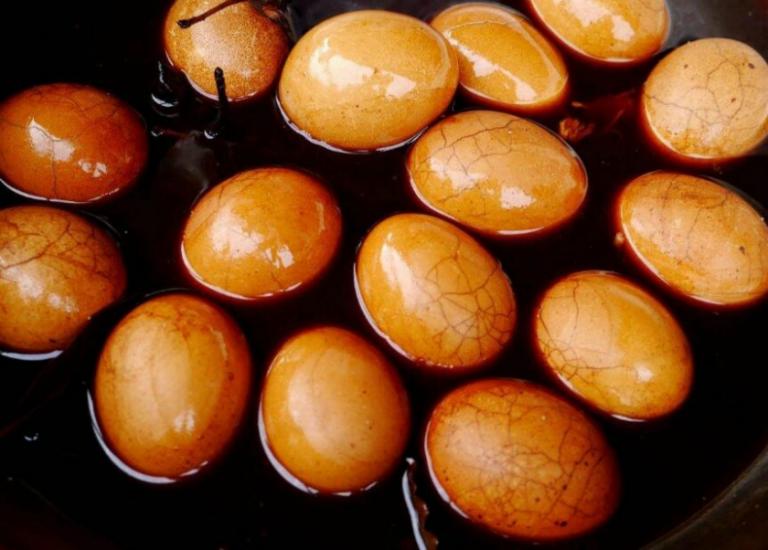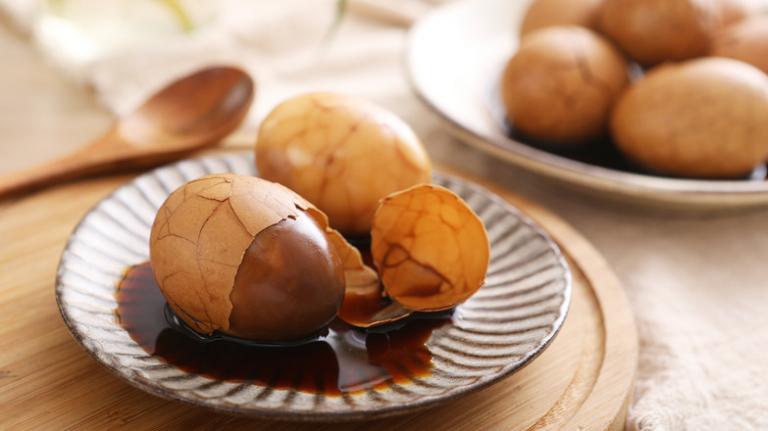TEA EGGS
2 min readI think it was Pierre Larousse who once said that,‘one cannot re-create the wheel,but merely refine it’.Guests at our restaurant often make the mistake of thinking that our food is‘fusion’when it’s actually a refinement of classical Chinese cuisine If you were to have this breakfast snack in China,it would inevitably be boiledto death,the yolk so well done that it will have turned grey.I wanted to achieve thesame degree of infusion with tea while retaining the egg’s soft,rich centre.I hope Monsieur Larousse would be proud of me.

Serves 6
INGREDIENTS
6 eggs
2 tablespoons oolong tea leaves
1 tablespoon mixed whole Chinese spice
2 tablespoons dark soy sauce
200g khataifi pastry

1.Place the eggs in a saucepan of boiling water for 4 minutes,then drain and immediately plunge into a bowl of iced water.Leave for 10 minutes to cool completely.
2.Meanwhile,make a pot of tea with the tea leaves and whole Chinese spice added and leave to cool,then strain and stir in the soy sauce.Leave to chill in the refrigerator.
3.Transfer the eggs to a temperature-controlled water bath set at 63C(see Che’s Tip)and leave for 25minutes before plunging a second time into iced water.
4.Remove the eggs and drain on kitchen paper.Using a teaspoon,lightly crack the shells of the eggs while keeping the shells as a whole intact.
5.Plunge the eggs into the cold tea mixture and leave to infuse for a minimum of 12 hours.The longer you leave the eggs in the infusion,the stronger the tea flavour will be.
6.Just before serving,peel off the shells and steam the eggs for 3 minutes until warmed through.
7.Serve each egg in a nest of the khataifi pastry.
CHEF’S TIP
I can already hear the bellows of”What do I do if I don’t own a water bath?”.The simple answer is go and buy a water bath or pass on this recipe’.Trying to make this dish without a water bath requires an accurate thermometer,a lot of ice for cooling the water and much patience in systematically alternating between heating a pan of water on the hob and dropping ice cubes into it when it exceeds 63C.And when I say 63C,it really has to be 63C because the yolk is at its coagulating prime at this temperature-a little cooler and it will be too runny for you to peel;a little hotter and you will get a hard-centred yolk.









